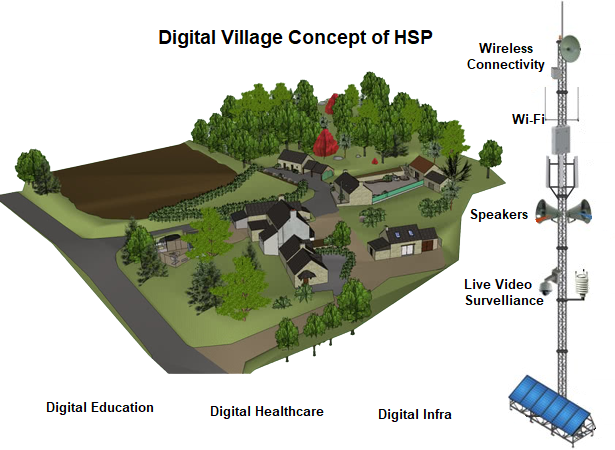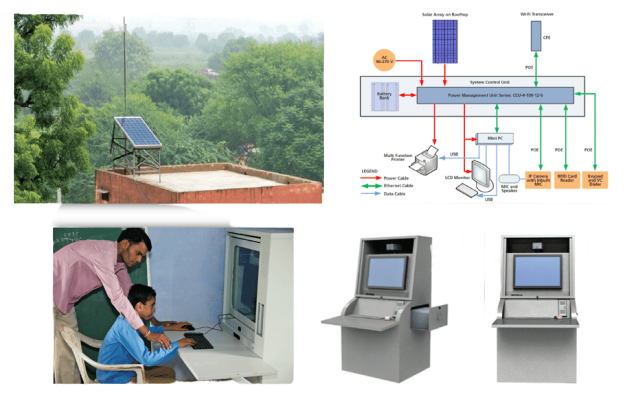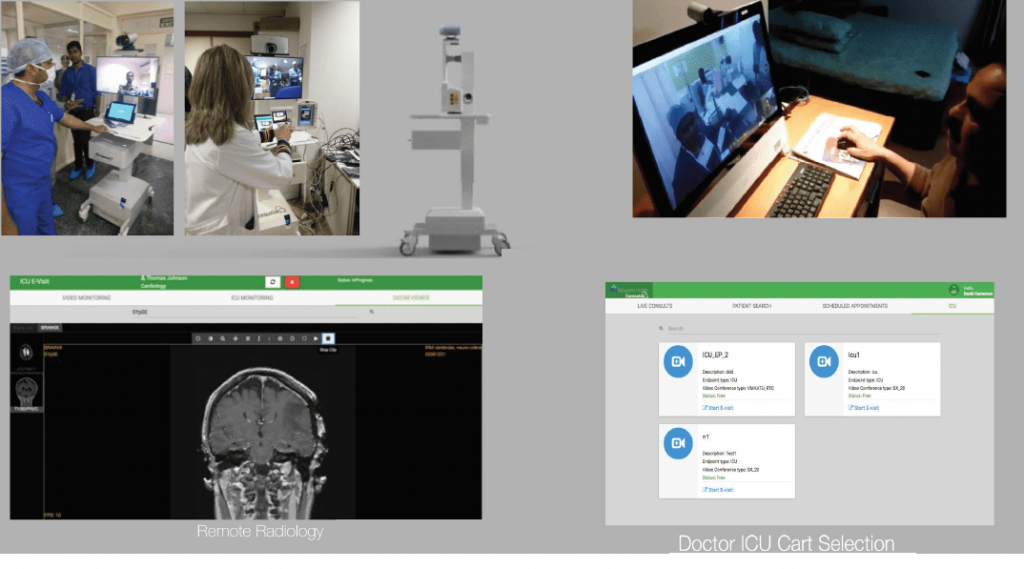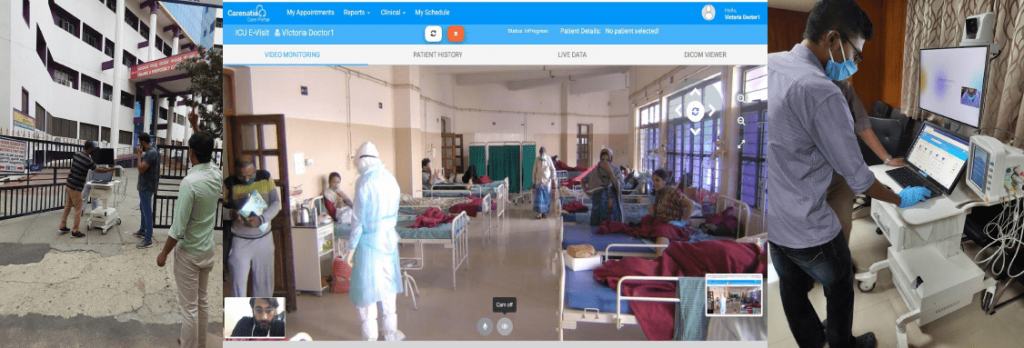The Digital Village can be defined as a flexible, country-specific, ecosystem whose design and development must be guided by the principles of feasibility, inclusiveness and sustainability.
Feasibility:
- Technology connectivity and internet access,
- Low cost access to technology tools, solutions and means of delivery
- Supportive policy, institutional and educational environment
Inclusiveness:
- Users & beneficiaries,
- Technology developers and digital services providers,
- Local authorities and enabling actors (banks, services, education and academia)
Sustainability:
- Technology adaptability, affordability and means for broad access to small scale farmers, herders, fisherfolks, household members and rural community residents
- Digital literacy, skill building and training infrastructure,
- Self-sustaining digital platforms; capable for dynamic expansion and scaling up

What exactly is a Digital Village? How does it benefit the villagers and the country? How can it be setup in a cost-effective manner, in a short time frame?
A Digital Village is often seen as an idea that can help remove the Digital Divide, enabling development to reach underdeveloped regions, and the country to leapfrog. In physical terms, a ‘Digital Village’ generally refers to a village that is connected to the digital infrastructure for quality healthcare , quality education , agribusiness and sustainable development of villages by offering emplacement to each villagers.
What does a Digital Village enable?
Once a village is connected in such a manner, it becomes fertile ground for inhabitants to achieve better productivity in all aspects of life, as well as enabling the government to reach the last mile and further its development agenda.
Agriculture
Because agriculture is the mainstay of most villages, the effects that digital connectivity can have on the farmers’ lives are tremendous. Information about weather, agricultural inputs, sowing and harvesting methods is vital, but far more important is the ability to find access to finance and markets, and the facility to bank online.
Education
The most obvious benefits are digitization of records, attendance and examination papers. But the gains are much more far-reaching in the area of e-Education. Students can not only get access to instant information about anything, but learn much better when digital classrooms open up the possibility of live and experiential education. A digital classroom is often no more than a connected computer attached to a projector, but it opens up new magical worlds to students. On the other hand teachers can prepare better lesson plans and engage in participative teaching a lot easier. Learning becomes much more fun, and enrollment increases dramatically. What’s more, the fun can multiply many times over when tablets are distributed, or when students use smartphones even when classes are over!
Health
Connectivity ensures that lives are not put at risk because of lack of contact. Ambulances are now within reach, and lives can be saved through speedy action. Villagers are able to call doctors, make appointments and discuss their cases. Records can be digitized and shared. Basic consultation can be delivered online. Plus villagers can watch video content about various illnesses and conditions and take first-level action themselves (eg in pregnancies). What’s more, Blood Pressure measurements and even ECGs can be conducted at connected terminals with basic help and guidance.
Governance
Citizens’ connectivity with governments facilitates a number of things. They not only get to know of policies, rules and procedures, but can transact to get things accomplished more conveniently. Filling forms, registering vehicles, obtaining identification cards, passports and even paying taxes are now much easier and obviate the need for travel and queuing up. What’s more, local politicians and officials now become more accessible and answerable. Corruption potential is reduced, and governments can be held accountable. Governments find they can conduct a virtual dialogue with citizens, as communication and feedback become instantaneous and interactive on digital media.
How can a Digital Village be set up?
Devices including computers, tablets and smartphones that are capable of connecting to the Internet are fast penetrating into the deepest interiors of the world today. So the issue with turning a village digital is less to do with devices but more to do with connectivity. Digital connectivity often stops well short of rural and remote areas not because of technical infeasibility, but because of business reasons. Telecom operators, both fixed and mobile find the business case of providing connectivity in such areas unprofitable because of large Capital Expenditure (CAPEX) for laying fibre, erecting towers and installing expensive base-stations and high recurrent Operational Expenditure (OPEX) for fuel for generators, security etc.
In such a scenario, alternative solutions must be employed to make the business case viable for extremely sparsely distributed and small populations.
The hallmarks of such a solution are :
- Wireless technology instead of fibre
- Easily transportable and erectable towers
- Solar panels with battery backup for ensuring always-on, low powered base stations
- Remote controlled configuration and monitoring
- Broadband through Wi-Fi
- Surveillance and Public Address (PA) System
- Kiosk for offering essential services at village information center.
- Interconnect arrangements with incumbent state order
The main objective of digital villages is to transform rural villages of India into smart villages through use of ICT applications, besides promotion of a self-sustainable service model for people residing in these areas. Also, a digital village will offer a one-stop service solution for rural people, through Common Service Centers (CSCs) run a by a village level entrepreneur, for services such as tele-education, telemedicine, financial services, internet connectivity and other G2C/B2C services which are easily accessible online at an affordable price. And not to mention, it will reduce the digital divide and enable rural citizens to avail all services as available to urban people.
As a proof of concept model, the Digital Village project has been implemented in villages where the area is connected through WiFi, entrepreneurship opportunities by setting up cottage industries for manufacturing candle incense sticks or sanitary napkins.
Conceptually, a digital village means it will have a digital banker, a digital doctor and a digital teacher with internet Wi-Fi access point. Apart from this, small units for LED assembly, manufacturing of sanitary pads and photography lab will be set up, which will generate employment as well. A village-level entrepreneur (VLE) operates and manages the CSC unit and is paid based on a transaction model. VLE needs to invest in setting up the infrastructure.
HSP has formulated HSP Foundation to improve health and education services in rural areas, provision of community access to IT-enabled resource centre, Wifi and LED street lighting at a commonplace in the village to create a conducive environment for digital literacy, financial inclusion and digital access to knowledge and services.
CSCs, an important part of HSP's Digital Village initiative, function as a single access point for delivery of services electronically, including passport enrolment, Aadhaar. They also enable people to access government services online such as train tickets, birth certificates, online submission of various forms and bills.
It will have a digital banker, a digital doctor and a digital teacher with internet WiFi access point. The internet connection will be provided through BharatNet, the government's programme to connect rural hinterland. Small units for LED assembly, manufacturing of sanitary pads and photography lab will be set up.
Ongoing Projects:
HSP is working on e-education & e-healthcare projects to enhance rural livelihoods.
e-Education centers
HSP is promoting e-education and helping reduce social evils like hunger and malnutrition in India. We are planning to deploy solar powered e-education centers across the country and connect all the centers via high-speed internet so that mentors may educate and guide children from anywhere anytime!

There are significant inequalities in access to secondary education as far as income, gender, social group and geography are concerned. The capacity of the secondary schooling system needs to be significantly expanded across India.
To accelerate the educational quotient of India, HSP's educational programs address the need of the hour and fosters the youth by providing open access to quality education using a multi-pronged approach:
- Providing access to quality education through a network of schools
- Offering Scholarships to the meritorious students
- Planning to set up a world class School for Global Education
- Supporting like-minded partners.
e-Healthcare centers
HSP is working towards enhancing access to quality and affordable healthcare in India. HSP’s ‘Health for All’ motto and our integrated e-healthcare model provides continuum of care to the most vulnerable sections of society through a network of e-healthcare delivery mechanisms.

e-Healthcare Highlights:
- State-of-the-art Planning, Design, Architecture and Infrastructure
- Cutting-Edge Technology, Equipment and Resources
- High-Quality Care with No Differentiation in Service
- Scalable, Multi-Use In-Patient and Isolation Rooms
- Fully-Digitised, Instant Access to Patient Medical Records
- National and International Green Building Conformance.

Fully-equipped Mobile Medical Units (MMUs) with state-of-the-art technology, including cloud-based software are incorporated to store patient information and plan programs for the communities. MMUs provide necessary e-healthcare services at the doorstep of beneficiaries through periodic visits. They further address beneficiary requirements with proper consultations and adequate medical care facilities.
Remote e-healthcare Carts provide diagnostic and e-consultation services focusing on chronic diseases like hypertension and diabetes and preventive e-health services. Professionally trained MBBS doctors, nurses and social workers cater to the primary medical care needs of the patients.

HSP has experience and better understanding to transform rural villages of India into smart villages through use of ICT applications, besides promotion of a self-sustainable service model for people residing in these areas.
Tailored to you.
HSP's experienced team will work with you to understand your needs and identify the solutions for digital villages.
For Further Information
Please Contact Us for more information.
